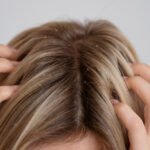Finding the right hair care routine can be a game-changer for the health and appearance of your hair. With countless products and techniques available, it can be overwhelming to know where to start. This guide will help you establish a personalized hair care routine that suits your hair type, lifestyle, and goals.
Understand Your Hair Type
The first step in creating a hair care routine is understanding your hair type. Hair types can be broadly categorized based on texture, density, porosity, and scalp condition.
Texture:
Hair texture ranges from straight to curly. Identify whether your hair is straight (type 1), wavy (type 2), curly (type 3), or coily (type 4).
Density:
Hair density refers to how many strands of hair you have per square inch of your scalp. It can be fine, medium, or thick.
Porosity:
Hair porosity is the ability of your hair to absorb and retain moisture. It can be low, medium, or high.
Scalp Condition:
Consider whether your scalp is oily, dry, sensitive, or normal.
Choose the Right Products
Once you understand your hair type, select products that cater to your specific needs. Here are some general guidelines:
Shampoo:
- For oily hair, choose a clarifying shampoo.
- For dry or damaged hair, opt for a moisturizing or sulfate-free shampoo.
- For sensitive scalps, look for gentle, fragrance-free options
Conditioner:
- For fine hair, use a lightweight conditioner to avoid weighing it down.
- For thick or curly hair, choose a rich, hydrating conditioner.
- For high porosity hair, deep conditioners and leave-in conditioners are beneficial.
Styling Products:
- For frizz control, use serums or oils.
- For volume, try mousses or volumizing sprays.
- For defining curls, use curl creams or gels.
Establish a Routine
A consistent routine tailored to your hair type and needs is essential for healthy hair. Here’s a basic framework to get you started:
Washing:
Frequency:
Wash your hair as needed based on your scalp’s oil production. Oily scalps may require daily washing, while dry scalps can go several days between washes.
Technique:
Massage shampoo into your scalp to remove buildup, then rinse thoroughly. Apply conditioner from mid-length to ends and leave it on for a few minutes before rinsing.
Deep Conditioning:
Frequency:
Use a deep conditioner or hair mask once a week to nourish and repair your hair.
Technique:
Apply the product to clean, damp hair and leave it on for the recommended time. Rinse thoroughly.
Drying:
Technique:
Gently towel-dry your hair to remove excess water. Avoid vigorous rubbing, which can cause damage.
Tools:
Use a wide-tooth comb or a detangling brush to prevent breakage. Air-dry whenever possible, or use a blow dryer on a low heat setting.
Styling:
Heat Protection:
Always use a heat protectant spray before using hot tools like straighteners or curling irons.
Tools:
Choose styling tools that are appropriate for your hair type to avoid damage.
Night Care:
Protection:
Sleep on a silk or satin pillowcase to reduce friction and prevent breakage.
Hairstyles:
Consider protective styles like braids or buns to minimize tangling and breakage.
Adapt to Changes
Your hair’s needs can change due to factors like weather, lifestyle, and health. Adjust your routine as necessary to accommodate these changes. For example, you might need more moisture in the winter or different products after a color treatment.
Listen to Your Hair
Pay attention to how your hair responds to different products and routines. If your hair feels dry, add more moisture. If it’s oily, consider washing more frequently or using lighter products. Your hair will give you clues about what it needs.
Establishing the right hair care routine involves understanding your hair type, choosing appropriate products, and maintaining consistent practices. By tailoring your routine to your specific needs and adapting as necessary, you can achieve healthy, beautiful hair. Remember, patience and consistency are key, so give your hair time to adjust to your new routine.
Image credits : Image by Racool_studio on Freepik








No Comment! Be the first one.